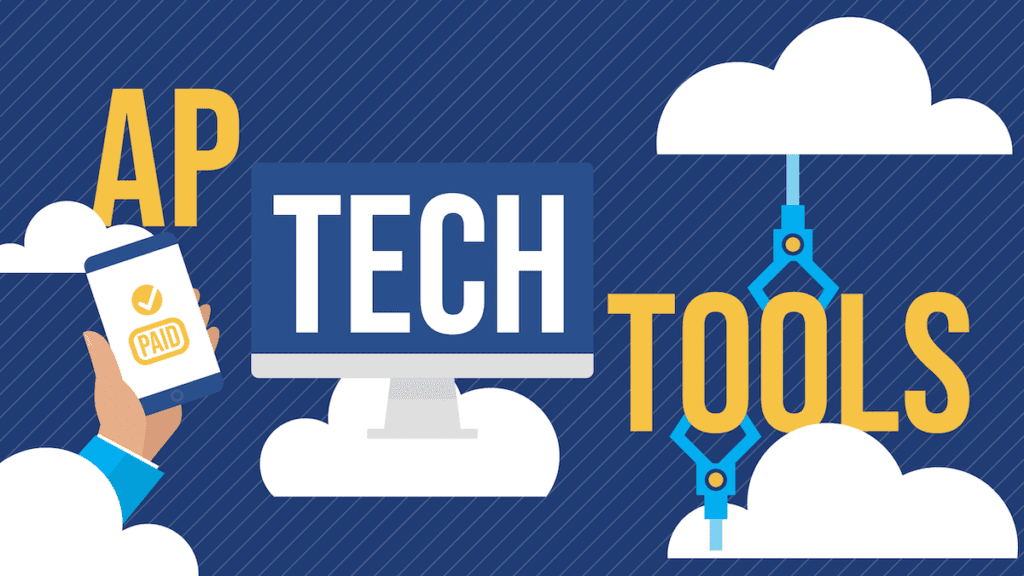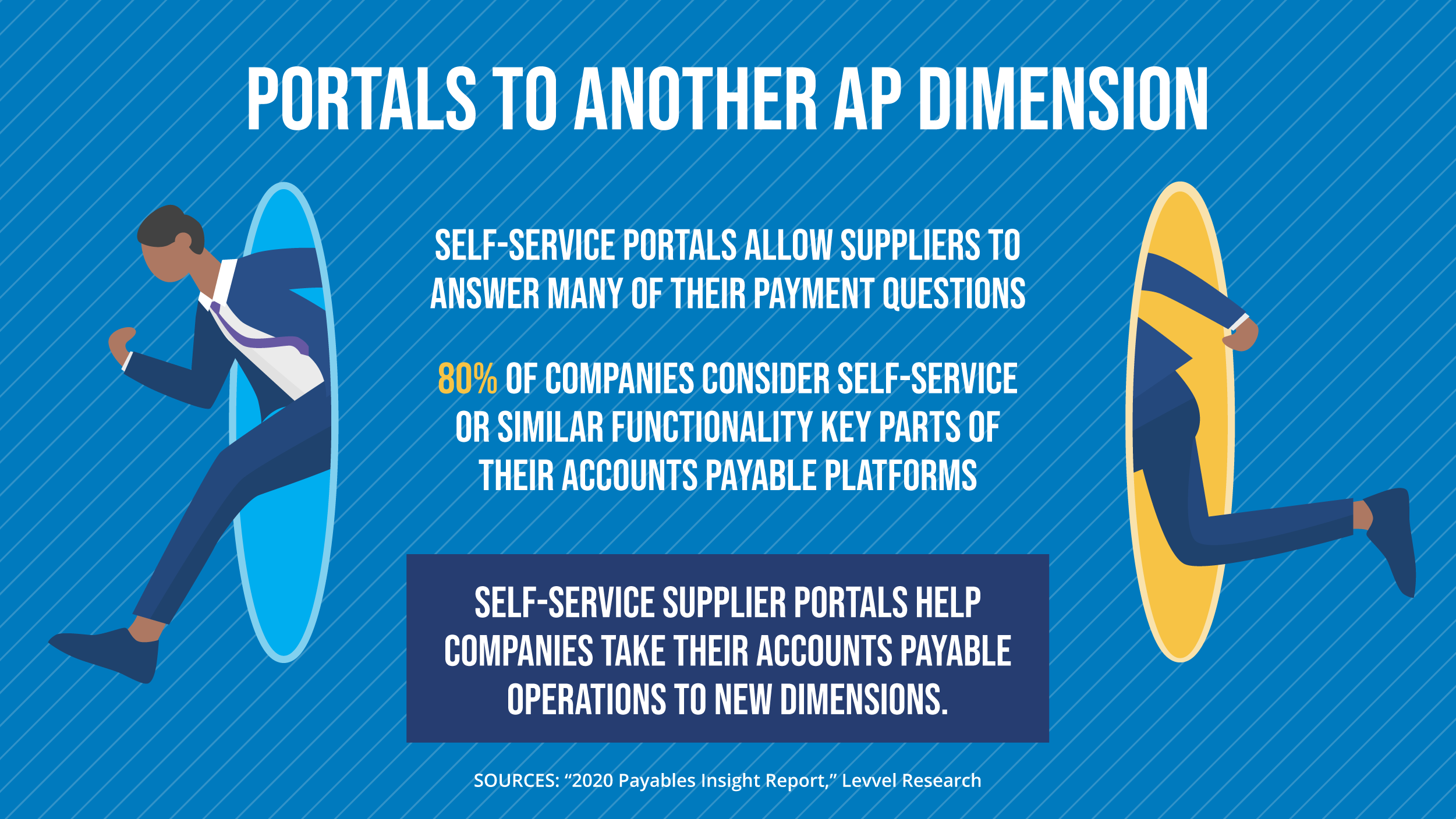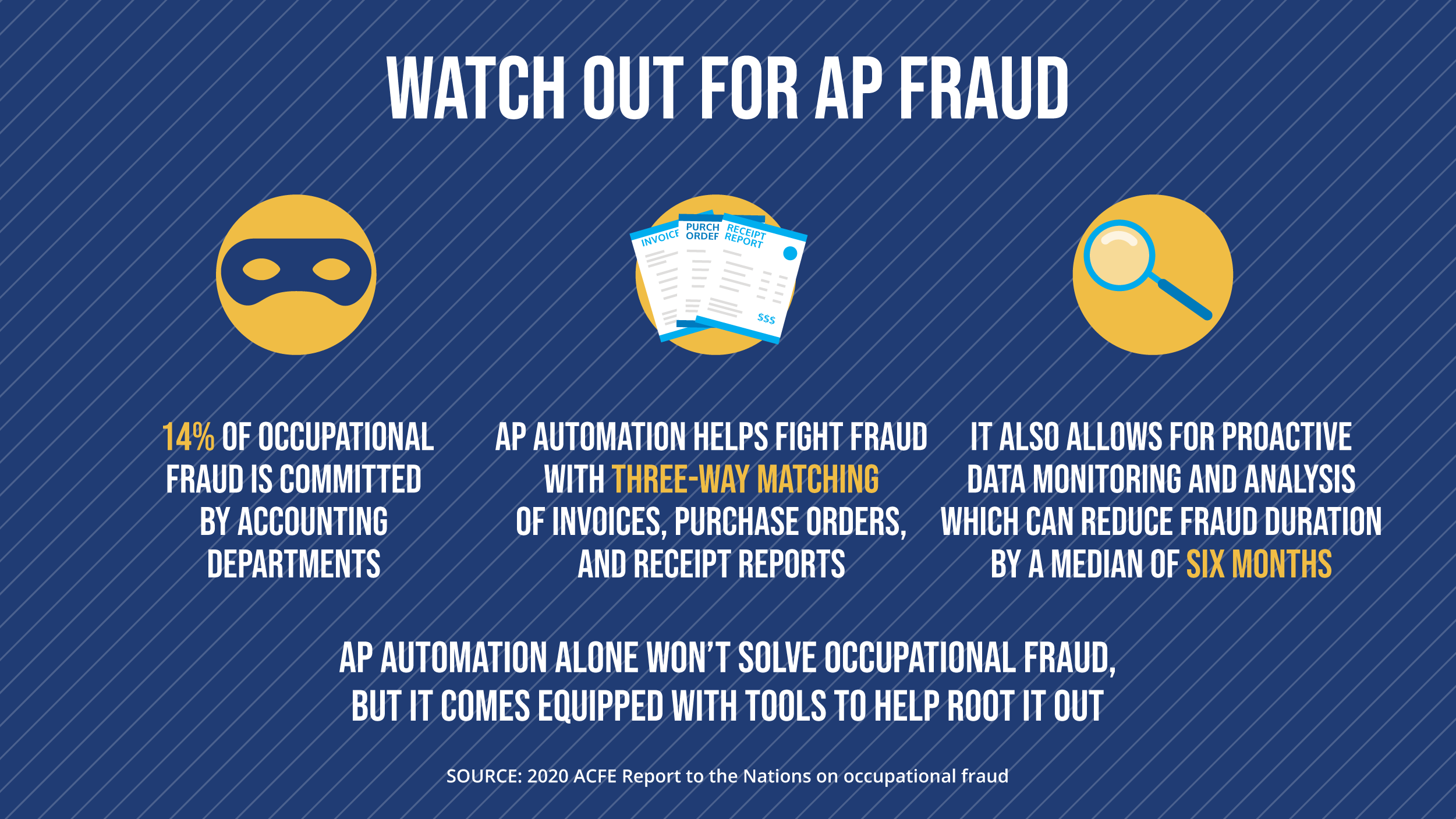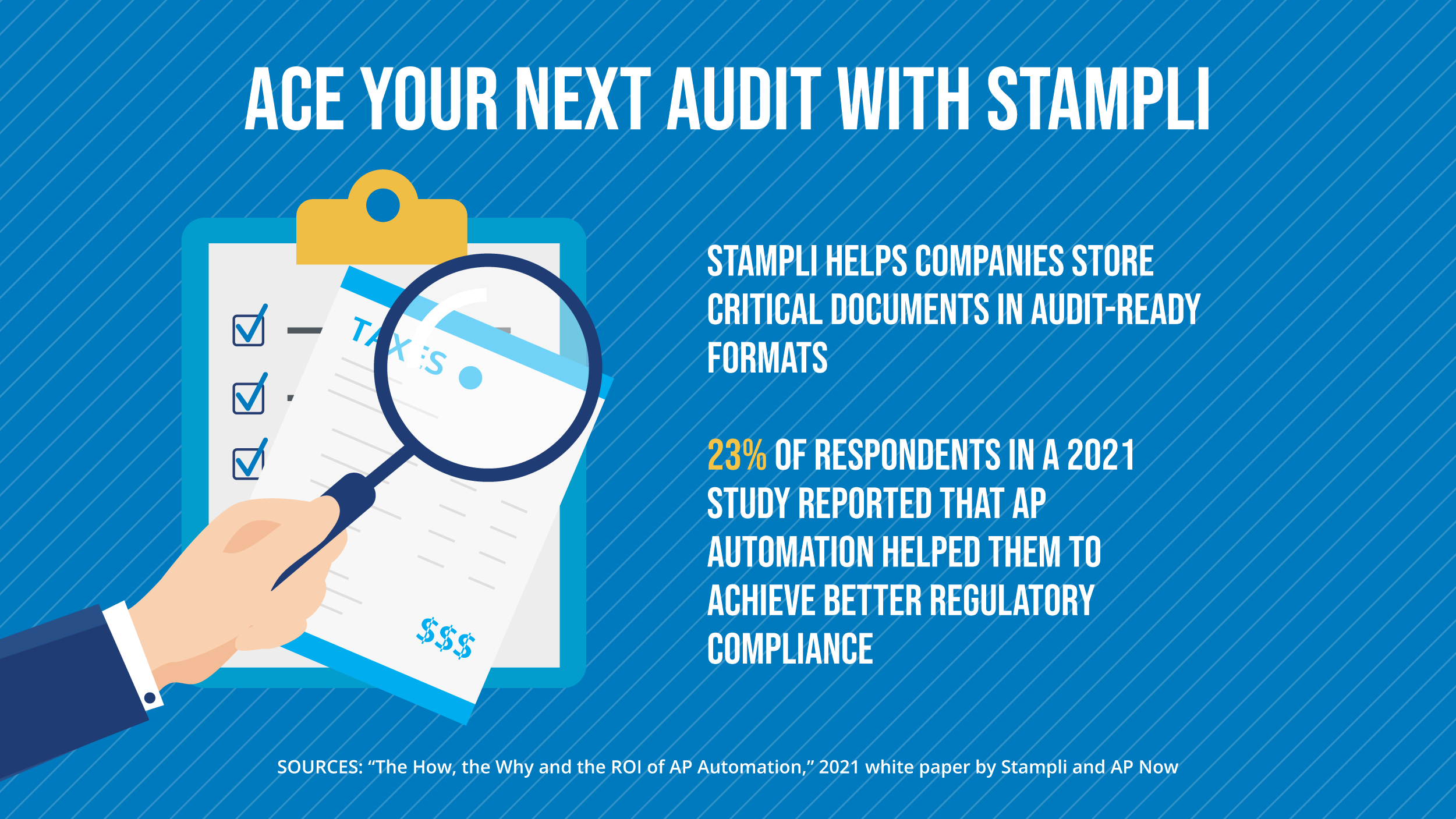Smarter Accounts Payable: Nine Essential AP Technology Tools

By now, the accounts payable automation movement has been going on long enough that if companies haven’t fully automated, they at least know they probably should.
While many companies have yet to implement a full procurement-to-payment (P2P) solution, many firms see improving their automation capabilities as a priority in the years to come. In fact, PYMNTS.com noted in its August 2020 Next-Gen AP Automation Tracker that 86% of companies “say automating payments is a priority.” And payments are just one part of AP automation.
For businesses looking to ramp up their AP automation, here are nine essential AP technology tools to consider, from supplier portals that encourage digital invoice submissions to tools that can help companies take control of the entire P2P process, all the while being prepared for their next audit.
Beginning of the AP Process: Invoice Receipt

The P2P process begins with a requisition when the process involves a purchase order and if not, when an invoice arrives. Without the proper AP technology, it can be the outset of a bumpy process. Here are three pieces of AP technology helping to ensure the start of AP’s work is smooth.
Supplier Portals to Encourage E-Invoice Submission
Despite that they take longer and cost more for companies to process, paper invoices remain popular with vendors. Close to half of companies even report that they’re still receiving invoices via fax, per PYMNTS.com’s Optimizing AP & AR Playbook from April 2020.
Things are starting to shift, though, with more invoices submitted electronically than by paper these days. Greater awareness for both companies and vendors of the benefits of e-invoice submissions is almost certainly helping drive the change. AP technology is also enabling smarter behavior.
Some AP automation platforms (such as Stampli) now come equipped with supplier portals (vendor portal) that allows vendors to view the status of their invoices, send invoice questions, update their profile and more. By submitting digital invoices, vendors can easily check on the status of invoices to ensure receipt and status. Which in turn, is a faster method for both parties as information is updated in real time. While the platforms aren’t terribly common, the benefits are clear. Levvel Research reported in its 2020 Payables Insight Report that 80% of companies considered similar functionality key elements of their accounts payable software platforms.
Intelligent OCR
It’s getting easier to input invoice data into general ledgers in enterprise resource planning (ERP) systems.
No longer do accounts payables clerks have to be stuck 10-keying an invoice into a proprietary DOS-based system. They also aren’t just confined to using intelligent optical character recognition (OCR) software that can scan invoices so long as they’re submitted in exactly the same format each time (typically PDF) and a human checks them afterwards as a control measure (with the traditional, rule-based OCR error rate around 1-2%.)
Needless to say, artificial intelligence is reshaping data entry, with intelligent OCR tools able to automatically extract invoice data from staff email. Intelligent OCR recognizes context. It can even learn from prior invoices (Stampli’s AI tool, known as Billy the Bot gets smarter over time), detecting changes in invoice format and if details from past vendor invoices are missing. Moreover, Billy learns invoice coding by taking into account coding when invoices are dispatched and changes that are made in later stages.
Workflow Automation
The receipt of an invoice is just the beginning of the P2P process, with that invoice more than likely needing to be seen by at least a few people within a company before it’s cleared for payment. But without automating approval workflows, that invoice might sit for precious days or weeks, costing a company a chance at an early payment discount and perhaps even leading to late fees.
Workflow automation is getting more common, though, with Levvel Research reporting that “invoice workflow is viewed as important by over 90 percent of organizations, making it one of the most critical features in AP automation software.” In other words, AP depends on most of the organization in order to conduct their job. When AP adds approvers to the digital invoice, AP automation systems like Stampli learn approval flows so the next time an invoice enters the system, the software will remember the previous workflow and suggest that automation path for approval.
Tools like Stampli also have communication tools embedded with the invoices so that each user can get quickly up to speed when the automated workflow reaches them. This includes all invoice-related activity (i.e. field changes), in addition to questions and any attachments. Another benefit is that previous invoices are included for easy reference if approvers need to revisit any historical invoices to make a more informed approval decision. Thus, it’s both an efficient and informed process.
Middle of the AP Process: Getting to Approval and Payment

If only accounts payable were as simple as receiving an invoice, getting money into a payables account, and cutting a payment. As anyone who’s worked in the field knows, though, the approval process can be long and winding, with the potential for issues.
The following three pieces of AP technology make approvals a little easier.
Three-Way Matching, With Line Item Review in ERP Systems
Scams remain a huge danger for AP, with 14% of occupational frauds committed by accounting departments, making it the second highest-risk division according to a Association of Certified Fraud Examiners (ACFE) 2020 report. AP can fight fraud by three-way matching invoices with purchase orders and receipt reports to prove the validity of transactions, though AP does this less often than it should. In addition to verifying invoice terms and receiving, AP can also create internal controls over who has access to the master vendor list, and other provisions.
AP automation systems can do three-way matching automatically, with Levvel Research noting in its 2020 report that “competitive cloud solutions provide field-level matching, meaning that they match specific characters in invoice line items with their counterparts in the POs.” Stampli is competitive enough in this realm that it can streamline PO line item matching by pulling POs via integration with several top ERP systems, including offerings from Oracle, Microsoft, and Sage.
Exception Management
Aside from dealing with anxious suppliers, another common past-time for AP workers is handling exceptions, namely questionable invoice details which require staff to conduct further research. In general, invoice issues can be common. In a 2019 study by AP Now and Stampli, “Common Invoice Problems: How to Deal With Them,” 71% of respondents to a survey cited within said they’d received invoices with no purchase order number or requisitioner name.
That said, AP automation platforms now often include exception management features that can automatically kick a troubled invoice back to a supplier, such as inviting them to collaborate on the invoice (with only the ability to see the question and image of the invoice). Levvel Research noted that advanced tools allow customizable approval workflows for when invoice exceptions take place. They can also be routed directly to approvers with mobile and email alerts.
The best companies seem to be leveraging AP technology to mitigate problem invoices, with 23% of respondents in a 2021 white paper by Stampli and Treasury Webinars, “The How, the Why and the ROI of AP Automation,” reporting that AP automation led to fewer invoice exceptions or duplicates.
Payment-Agnostic Pay Tools
Payment gets held up for any number of reasons within accounts payable departments, from cash flow issues to a dispute with the transaction to an approver being out of the office and unreachable. Sometimes, though, it’s for an issue not immediately in a company’s control: Their accounting software tries to shoehorn them into making a payment in a specific manner, even if it might not work in a given situation.
On the other hand, Stampli Direct Pay is payment agnostic, allowing companies to make B2B payments in whichever manner they decide. Whether it’s a digital payment via the automated clearing house (ACH), an old-fashioned paper check (which many businesses and vendors still prefer), or any other method of payment that both parties agree on, AP automation solutions like Stampli can accommodate it if even it’s outside of Stampli.
End of the AP Process: What Should Follow Payment

While the term procurement-to-payment would suggest that accounts payable work finishes when remittance is sent, the truth is that the work isn’t over at that point.
Good AP automation systems have reporting capabilities that automatically kick in, always keeping a company up to date for the next audit, possible instance of fraud, or – on a more positive note – potential opportunity.
Here’s some emerging AP technology in this realm.
AI and Machine Learning for Data Analysis
Accounts payable is a treasure trove of data, though sometimes, this information can get overlooked. No one really has time to manually go through hundreds or thousands of lines in a general ledger and if they are making this time, it’s probably at the expense of three or four other things that should be happening. AP technology with AI and machine learning is making it so that these reviews can happen automatically with reports.
For example with Stampli Reports, this functionality removes the need to manually gather the right invoices and information, which can be stored across various places, by giving AP teams a single spot to access, organize, save, and share custom views of invoice activity depending on their day-to-day needs. The ACFE found that proactive data analysis and monitoring could reduce fraud duration by a median of six months.
Audit-Ready Storage
Companies never completely know when the next audit is coming. And not having requisite documents together when the auditor arrives can ensure the audit will take longer, cause more disruption, and probably cost more.
With AP technology and automation, though, companies don’t have to worry about being ready for their next audit. The systems store all the information that’s needed in an easily accessible audit trail attached to every single invoice, instantly available whenever the auditor needs them. It helps all in all for better compliance, with 23% of respondents in Stampli and AP Now’s 2021 white paper reporting that AP automation helped them achieve better regulatory compliance.
Spend Management
Cash management isn’t the easiest proposition for companies, especially in challenging economic environments. Having technology that can offer suggestions for cashflow can go a long way at a tough time.
Already, AP automation is helping to enable this trend, with the reporting capabilities in the software able to help companies become strategic about their cashflow. It’s just one more way that AP technology is helping make for a brighter day in accounts payable.
Automation with the latest AP technology trends. Check out Stampli today.
